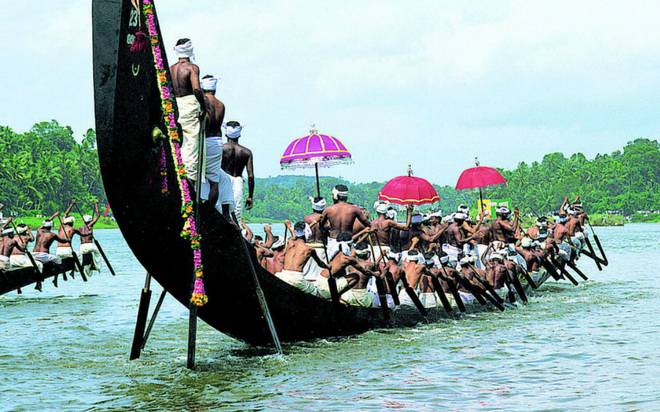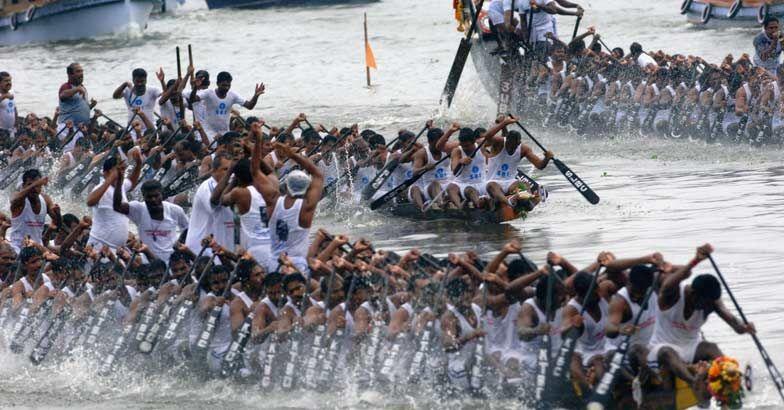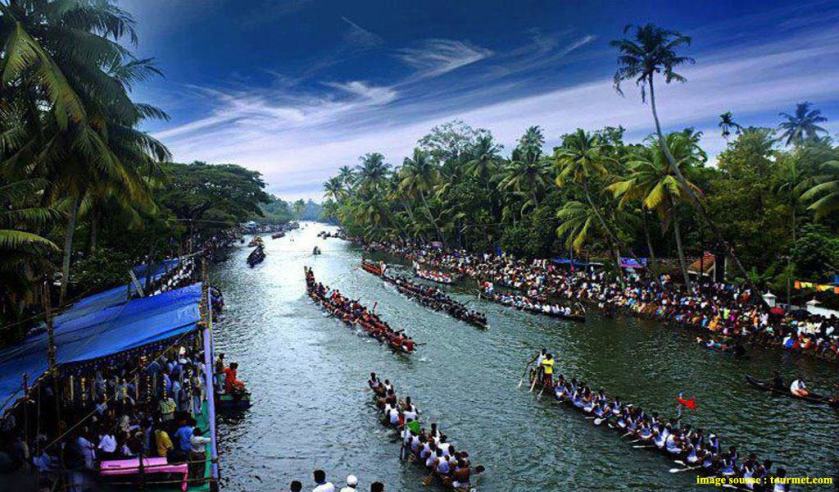The story of Kerala’s boat races begins in Assyria before the birth of Christ. Kerala or Keralaputra as it was known earlier had been a famed spice exporter to Assyria, Babylon, and Egypt as far back as the 3rd and the 2nd century BC. The boat races which had been a New Year celebration in 300 BC in Assyria, later arrived in Kerala. Many Indian kingdoms adopted the boat races and eventually, they became the domain of Kerala. Disputes among kings were often settled through boat races.

Kerala, with its numerous back waters, sustained the races and today they are a well-known tourist attraction in ‘God’s Own Country’. Vallam Kali, which means boat game, takes place during Onam, Kerala’s harvest festival. Chundan Vallam, which stands for snake boat, is the festival’s highlight
The rivers and backwaters of Kerala enrich the region’s culture in a variety of ways. One of the ways in which it manifests is the Vallam Kali, the traditional boat races of Kerala. Mostly celebrated during the harvest festival of Onam in autumn, it includes many kinds races with the traditional long boats of Kerala. Vallam Kali even has its own form of poetry-song called Vanchipattu (boat song) which is sung by oarsmen while rowing and even during some of the rituals that precede a race. The race of chundan vallam (‘snake boat’) is the most important event. Other types of boats which also participate in other race are churulan vallam, iruttukuthy vallam, Modi vallam, Beppu vallam, vadakkanody vallam and kochu vallam. One of the most popular events is the Nehru Trophy Boat Race held in the Punnamada Lake near Alappuzha.
According to legend, the origin of the snake boat race dates back to the ancient times, when the head of the Katoor Mana, a Nambudiri family, stood on the banks of the river Pamba, praying to Lord Krishna and waiting for a poor man to pass by whom he could feed to complete his rituals. It is believed that Lord Krishna took the form of a ragged boy, whom the Brahmin proceeded to bathe and feed before he disappeared and later made an appearance at the Aranmulla Temple. The Brahmin realized that the boy was an incarnation of God, and returned to the temple each year with food, along with a fleet of snake boats to guard the offerings. Thus began the appearance of Snake Boats in the river as others joined him in the ritual, and soon enough, the custom of the Snake Boat Race emerged.
The Vallamkali boat is a traditional canoe style boat which is the ancient war boat of Kerala. It is about a 100 feet long and can hold approximately 150 men. It has a long and slender wooden body with curled ends that are shaped like the hood of a cobra, hence the name Snake Boat. Each village takes pride in its own snake boat, and the villagers maintain it throughout the year and adorn it with decorations prior to the race. The embellishments added to the boat are considered as symbols of the prosperity of the town. The locals gather by the river on the day of the race to cheer on their team, because winning the race is a matter of prestige.

The actual races begin once prayers are offered to Lord Vishnu and Mahabali and the flowers from the Puja and placed in the boats. Around 30 boats elaborately decorated with adornments race on a stretch of water that is approximately 40 km long. Each boat carries 125 oarsmen, the rest of the occupants being helmsmen and singers. The oars move to the rhythm of Vanchipattu, traditional songs that add to the music of the splashing water. Coordination between the team members is extremely important to prevent the boat from toppling. The winning boat gets to accompany the Palliodam, a boat that distributes food along the river banks as per an ancient tradition of Onam, painting a serene picture in the magnificent landscape.
Our major snake boat races and several other minor ones are held each Monsoon in and around Alleppey. The most popular one is the Nehru Trophy held at the Punnamada Backwaters, which is named after the first prime minister of independent India who was also an avid fan of the Snake Boat Races. Other spectacular races include the Champakkulam Moolam, the Payippad Jalotsavam, and the Aranmula Boat Race.

The rituals associated with the Vallamkali Boat Race encourage the natives to participate in charity, to take pride in their community, and to pay homage to the magnificence of the water bodies that bless their land. In this manner, the Vallamkali Boat Race is the best way for the travelers to understand the principles that define the cultural heritage of the majestic state of Kerala.
The Snake Boat of Kerala is not just an iconic symbol of an age-old tradition that is deeply embedded in the local culture but is also a constant reminder to the locals regarding the importance of team spirit and of moving with the flow of the natural forces.
Kerala needs our help to fight the aftermath of the floods. Let’s stand together with Kerala, like the people of Kerala have done all their lives. Donate to the Kerala Chief Minister’s Distress Relief Fund (CMDRF) https://donation.cmdrf.kerala.gov.in/
See you tomorrow.
Follow me on Instagram: wordpressblogger03 and on the facebook page: don’t worry be happy.
Source- Wikipedia.